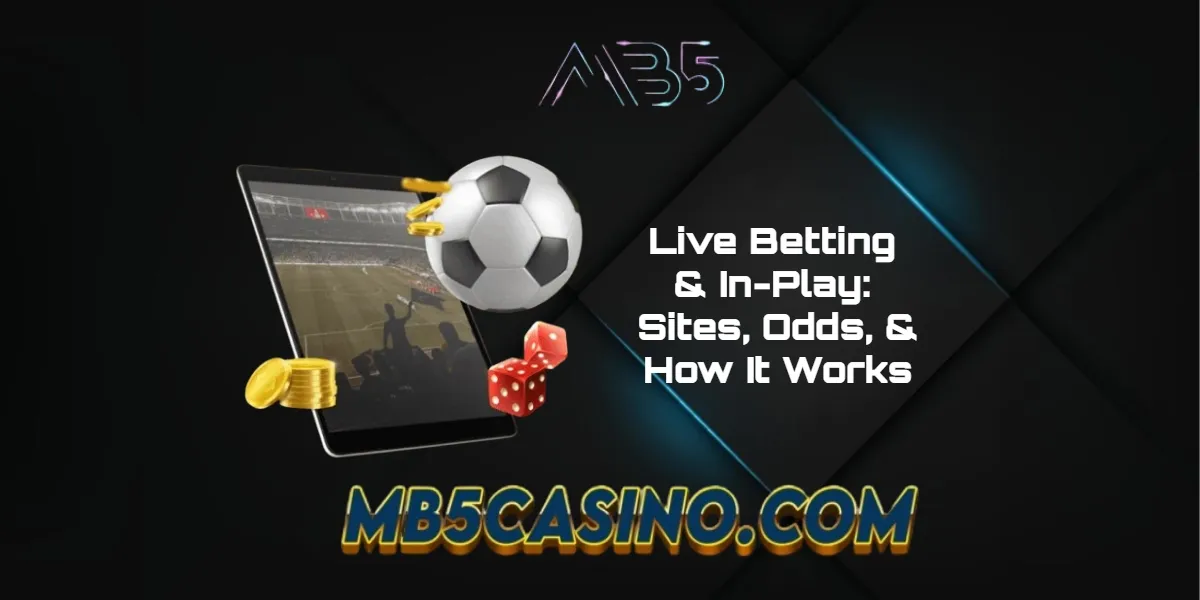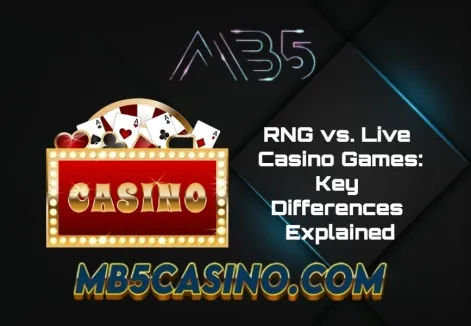The world of sports betting has undergone a monumental transformation, moving beyond static pre-match wagers into the adrenaline-fueled environment of Live Betting, also known as In-Play or In-Game betting. This dynamic form of gambling allows enthusiasts to place bets on an event after it has started and while the action is still underway. It has fundamentally changed the sports viewing experience, turning every second of a match into a potential wagering opportunity.
This comprehensive guide will delve into the mechanics of live betting, explain how the volatile odds operate, highlight the top sites leading the charge, and outline practical strategies for success in this fast-moving market.
1. Understanding Live Betting: Core Concepts
Live betting is exactly what it sounds like: placing wagers on a sporting event that is currently in progress. Unlike traditional, or pre-match, betting where all wagers must be placed before the opening whistle or first pitch, in-play betting offers a continuously updated stream of markets and odds until the event concludes.
How It Works: The Real-Time Ecosystem
The infrastructure of live betting is a complex, high-tech operation, driven by sophisticated algorithms and real-time data feeds.
Continuous Odds Updates: The single most defining characteristic of in-play betting is the constant fluctuation of odds. These changes are triggered by every significant event on the field: goals scored in soccer, touchdowns in football, injuries in basketball, service breaks in tennis, or even sudden shifts in momentum.
Market Suspension: When a major event occurs (such as a goal, penalty, or challenge in team sports), the sportsbook will often suspend the market. This temporary halt allows their systems to process the new data, calculate the revised probabilities, and update the odds before reopening the market for new wagers. These suspensions typically last only a few seconds, underscoring the necessity of speed.
Bet Acceptance Delays: Due to the rapid pace of odds movement, online bookmakers often implement a slight delay, sometimes called a "bet acceptance delay" or "cancellation window," for live wagers. This delay—usually 5 to 10 seconds—ensures that bets aren't placed on odds that have instantly become obsolete due to a recently completed play on the field. Bettors often have an option in their settings to automatically accept the bet if the odds improve during this delay, or to require manual confirmation if the odds worsen.
Diverse Market Selection: Live betting expands the betting menu far beyond the standard Moneyline, Spread, and Total. Markets become micro-focused, allowing bets on the outcome of the next play, period, or a specific player action.
Examples of Common In-Play Markets
The available markets are highly varied and specific to the sport:
- Next Team to Score: Betting on which team will score the next point, goal, or run during the live game.
- Next Drive Result (Football): Will the current offensive drive end in a touchdown, field goal, punt, or turnover?
- Winning Margin at End of Quarter/Half (Basketball/Football): Betting on how many points one team will be ahead by at a specified interval.
- Next Corner/Card/Throw-In (Soccer): Ultra-specific bets on the immediate future of the match.
- Next Point/Game/Set Winner (Tennis): Wagering on the outcome of the smallest unit of the match.
- Live Player Props: Updated over/under bets on a specific player's cumulative statistics (e.g., Will LeBron James finish with Over 28.5 points?).
2. The Dynamics of Live Betting Odds
Understanding how live odds change is crucial for identifying value and correctly timing your bets.
The Mechanics of Odds Fluctuation
Sportsbooks calculate live odds using advanced predictive analysis and statistical models. These models are fed real-time data—score, time remaining, possession stats, fouls, injuries, and more—and instantly adjust the probability of all outcomes.
Momentum and Probability: When a favorite team (initial odds of -200) concedes an early goal, their probability of winning drops, and their live odds will immediately lengthen, perhaps to 120. Conversely, the underdog's odds will shorten dramatically. The key is that the price is adjusted based on the new situation, creating potential value if you believe the initial favorite is poised for a quick rebound.
Time Decay: For most betting markets, time serves as a powerful factor, known as time decay. The less time remaining in a game, the more valuable a lead becomes. In a soccer match, a 1-0 lead with 80 minutes left is very different from a 1-0 lead with 8 minutes left. The odds for the leading team will shorten as time runs out, as there is less opportunity for the opponent to score.
Implied Probability: All odds translate to an implied probability of that event occurring. Live odds of 2.00 (Decimal) or 100 (Moneyline) mean the bookmaker gives the outcome a 50% probability. If you believe the true probability is higher than the implied probability in the live odds, you have found a value bet.
Hedging and Middling with Live Odds
One of the most powerful applications of live betting is its ability to facilitate hedging and middling.
-
Hedging: This involves placing a new live bet that directly counteracts your initial pre-match bet. The goal is to guarantee a profit regardless of the outcome or significantly reduce your risk. Example: You bet pre-match on Team A to win at 200. Team A takes a commanding lead, and the live odds on their opponent (Team B) to win are now 1000. You place a smaller bet on Team B to win at 1000. If Team A wins, you profit handsomely from the original bet. If Team B makes an unlikely comeback, your small win on Team B covers most or all of your original stake, minimizing your loss.
-
Middling: A higher-level strategy where a live bet is placed to create a chance of winning both your original pre-match bet and your new live bet. This is most common with spreads and totals. Example: You bet on an NBA total Over 220 points pre-match. The game starts slow, and the live total drops to 205 points. You place a live bet on Under 205. If the final score lands between 206 and 219, you win both wagers.
3. What are live betting and in-play betting, and which sites offer the best experience?
The best live betting sites are defined by speed, market depth, and features that enhance the in-play experience. The core features to prioritize include:
Speed and Interface: This is critical. Odds update instantly; the app/site must be fast to ensure you don't miss line movements. Sites like DraftKings, FanDuel, and bet365 are known for their quick interfaces.
Market Depth: Look for a variety of in-play bets offered, going beyond the main markets to include next point, drive results, and specific player props. bet365 is often a global market leader in this area.
Live Streaming/Visualizer: The ability to watch the action live or follow a real-time graphical representation of the play-by-play updates is a major advantage. bet365 and Caesars Sportsbook often excel here.
Cash-Out Option: This allows you to settle a bet early for a reduced win or loss, based on the current live odds. It is a necessary risk management tool available on nearly all major platforms.
Odds Competitiveness: Ensure the vigorish (bookmaker's cut) is fair. Competitiveness can vary, so comparing lines between books is always wise.
Key Considerations: A seamless and rapid mobile app is non-negotiable for live bettors. Additionally, check the book's Odds Refresh Policy to see if they automatically accept small shifts in your favor or require manual confirmation for all changes.
4. Strategies for In-Play Success
Live betting is not just reactive; it is an analytical pursuit that requires discipline and deep sports knowledge.
Strategy 1: The "Eye Test" Advantage
The single biggest edge a live bettor has is the ability to watch the game. Computer algorithms react to raw data, but the human eye can spot subtle factors that aren't quantifiable.
-
Observe Momentum Shifts: Does a team look fatigued? Is a star player nursing an injury but staying in the game? Has a coach made a brilliant tactical adjustment that the odds haven't fully reflected yet? A good eye test allows you to bet on a momentum change before the market fully adjusts to the scoreboard.
-
Bet the "Trailing Favorite": One of the most popular strategies is to bet on a pre-match favorite that falls behind early. Because the odds lengthen significantly, if you trust the favorite's quality, you get a much better price than you did pre-match, effectively capitalizing on a short-term overreaction to a poor start.
Strategy 2: Pre-Match Preparation is Key
Successful in-play betting begins before the event starts.
-
Know the Narrative: Understand the pre-game news, including injuries, lineup changes, weather, and historical matchups. This context helps you understand why the live odds are moving and whether that movement is justified.
-
Anticipate and Stalk Markets: Identify three or four scenarios before the game where you would want to place a live bet. For example: "If Team B is down 10 points in the 3rd quarter, I will bet their Moneyline at plus-money." This eliminates emotion from the rapid decision-making process.
Strategy 3: Specializing in Specific Markets
The sheer volume of live markets can be overwhelming. Focusing on niche markets where you have expertise can be profitable. Sports like Tennis and Basketball are excellent for trusted online sportsbook Malaysia due to the frequent, dramatic swings in odds (a single break in tennis, a 10-0 run in basketball) that create numerous opportunities to buy low or sell high.
5. The Cash-Out Feature: Real-Time Risk Management
The cash-out feature is a vital tool for the live bettor, allowing you to settle a wager early before the event concludes.
Cash-Out vs. Hedging
While both are risk management tools, there is a fundamental difference:
-
Cash-Out: This is an internal function offered by the bookmaker to buy back your bet at a price they determine. It terminates your wager at that site, giving you a guaranteed profit or loss. It always carries a cost (the bookmaker's added edge).
-
Hedging: This is a new bet you manually place (usually on the opposite outcome) using the current live odds. By hedging, you maintain both wagers, creating a scenario where you are either guaranteed a profit or minimize your overall loss. Hedging often provides better value than cash-out because it doesn't include the extra vig from the cash-out feature.
Cash-out is best used as a quick risk management tool to lock in profit when you are worried about a potential collapse, or to cut a major loss, especially if you do not have the time or opportunity to manually hedge.
Conclusion
Live betting is not a fleeting trend; it is the definitive future of sports wagering. It offers an unparalleled level of engagement and analytical opportunity, transforming the passive viewing experience into an active, decision-driven one. By understanding the mechanism of the shifting odds, choosing a fast and reliable betting site, and implementing a disciplined strategy based on the "eye test" and thorough pre-game research, a bettor can navigate the volatile, yet potentially rewarding, landscape of Live Betting. The speed and excitement demand a cool head, but for the prepared bettor, the action-packed world of in-play wagering offers a never-ending stream of opportunities.








































